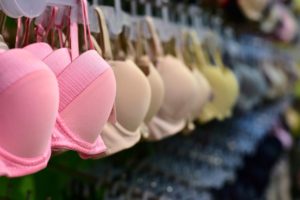Bra Myths
 The debate on breast care is ongoing with two main schools of thought: those who support the idea that bras are harmful and those who argue that bras are not harmful. Though there may be a gray area, the basic arguments surrounding the effectiveness of bras and their contribution (or not) to breast care seem to fall under these two categories. To help clear up some of the uncertainties, the following bra myths are explained.
The debate on breast care is ongoing with two main schools of thought: those who support the idea that bras are harmful and those who argue that bras are not harmful. Though there may be a gray area, the basic arguments surrounding the effectiveness of bras and their contribution (or not) to breast care seem to fall under these two categories. To help clear up some of the uncertainties, the following bra myths are explained.
Bra Myths
- Bras are Linked to Breast Cancer
This is probably the most common myth that circulates, claiming that wearing a bra increases the chances of developing breast cancer later in life. However, there is no scientific basis for this claim as of yet. According to a 2014 study on 1500 women, there is no correlation between wearing a bra and breast cancer risk. There are other physical and behavioral factors that contribute to the risk of breast cancer, but there is no direct correlation between those and whether you choose to wear a bra or not.
- Bras Stop Breasts from Sagging
When refuting this myth, it is important to consider that bras can rest on many places on women’s chests: some are high, some low, some more to the side, or in the middle, and the fullness changes as you go through your menstruation cycle and other hormonal factors you may be experiencing. As such, the firmness and elasticity of your skin are genetically determined and cannot be fully determined by a product whose use alters day by day. Other factors such as rapid weight gain or loss, as well as smoking may affect the elasticity of your skin.
- Bras Make Breasts Sag
On the other hand, there are those who claim that wearing a bra will make your breasts sag. As with the argument that a bra stops breasts from sagging, we should remember that—again—elasticity and firmness of skin is genetically determined and behavioral and physical factors may alter it.
- Most Women Wear the Wrong Bra Size
Though this statement may have an element of truth in it, there are no conclusive studies to prove that women make extremely detrimental choices when buying bras. It is understandable that there may be minor mistakes made, such as choosing a design that doesn’t quite fit your body or supports your daily activity habits, but most women will purchases bras that more or less fit their chest area and make them feel comfortable. After all, there is no specific guaranteed that we wear the right bra at any given moment, as our hormones and physical condition (swelling, sweating, sitting etc.) affect our breasts day by day.
- Wearing a Bra at Night
As with most other arguments around the safety of bras, some disagree with the idea of wearing a bra in your sleep. There is no scientific evidence to prove that sleeping with a bra on will harm you, and some doctors may even recommend it if your breasts feel sore. If you do choose to sleep wearing a bra, it is recommended that you pick out a lightweight, non-underwire bra. It should not be too tight, neither have parts that dig in as you want to avoid it causing skin/breast irritation or disrupt your sleep.
Takeaway
As with anything else you do for your health, you should make sure that you are comfortable in the bras you choose to wear. Consult your doctor if you experience any persistent or unusual breast pain or if you choose to change your bra habits and are concerned about your breast health.
